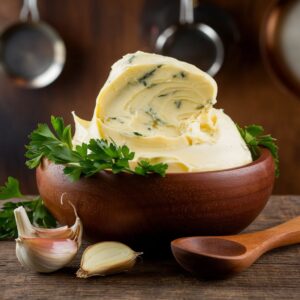Peanut butter is one of those staple foods that just seems to always be around. Whether it’s spread on toast, used in baking, or just eaten by the spoonful (I’ve been guilty of that), it’s a go-to for many people, including myself. But have you ever wondered who invented peanut butter? You’re not alone—this humble spread actually has an interesting history. Let’s dig into it!

Who Invented Peanut Butter? A Brief History
While many people might assume one person invented peanut butter, the truth is, it has a rather layered origin. Who invented peanut butter? There are a few key figures in its history, and the creation of peanut butter was more of a process than a single moment of inspiration.
One of the earliest mentions of peanut butter goes back to the 1880s when Marcellus Gilmore Edson, a Canadian chemist, patented peanut paste. His version of peanut butter wasn’t quite like the creamy spread we know today, but it was a step in the right direction. Edson’s version was made by milling roasted peanuts into a paste.
However, peanut butter in its more modern, spreadable form? That credit often goes to Dr. John Harvey Kellogg, the same man behind Kellogg’s cereals. In 1895, Kellogg patented his own version of peanut butter. He wasn’t exactly aiming for a delicious snack, though. His peanut butter was designed as a protein substitute for people who couldn’t chew solid food. Talk about functional food!
The Role of George Washington Carver
Another key figure in the history of peanut butter is George Washington Carver. While Carver didn’t technically invent peanut butter, he did a lot of work to popularize peanuts and create over 300 peanut-based products. His research at Tuskegee Institute helped elevate peanuts from a simple crop to a versatile ingredient. Without Carver’s contributions, we might not be spreading peanut butter on toast today.

My First Time Making Homemade Peanut Butter
Speaking of peanut butter, I remember trying to make it at home for the first time. I thought it would be as simple as throwing peanuts into a blender, but I quickly learned there’s an art to it. You need the right balance of roasted peanuts, oil, and a touch of salt. That first batch? It was a little too chunky and dry, but hey, practice makes perfect. Now I make it regularly, and nothing beats the fresh, creamy texture of homemade peanut butter.
Commercial Peanut Butter Takes Off
By the early 1900s, peanut butter was no longer a question limited to kitchen experiments and health food recipes. In 1922, a man named Joseph L. Rosefield took peanut butter to the next level. He developed a process that allowed peanut butter to stay fresh for longer, giving birth to the commercial peanut butter industry. Rosefield’s invention led to the peanut butter we see in stores today—smooth, spreadable, and shelf-stable.
In fact, Rosefield licensed his process to companies like Swift & Company, which produced Peter Pan peanut butter. Later, he launched his own brand: Skippy, a name we all recognize now. When I think about all the PB&Js I’ve made with Skippy over the years, it’s clear Rosefield’s innovations were truly game-changing.

Why Is Peanut Butter So Popular?
Now that we know who invented peanut butter, you might be wondering how it became such a popular staple in households worldwide. Peanut butter took off in the U.S. largely because it was nutritious, affordable, and easy to store. During World War II, it became a staple in soldiers’ rations, further cementing its place in American culture.
I remember growing up and always having a jar of peanut butter in the pantry. Whether it was for a quick sandwich, a peanut butter cookie recipe, or just a spoonful for a snack, it was always there. Even now, it’s one of my favorite ingredients, and I often use it in smoothies, on apples, or even in savory dishes like peanut sauce for noodles.
The Answer to Who Invented Peanut Butter
So, when it comes to peanut butter? While there’s no single inventor, it was a collaborative effort spanning decades, from Marcellus Gilmore Edson’s peanut paste to Dr. John Harvey Kellogg’s protein-rich peanut butter to Joseph L. Rosefield’s commercial breakthroughs. Each of these figures played a role in creating the peanut butter we know and love today.
Next time you reach for that jar, you’ll know that peanut butter has a fascinating history filled with innovation and creativity. And if you’re like me, you’ll appreciate each spoonful a little bit more, knowing the journey it took to get from peanut to spread.
Thanks for reading! Explore more articles on Healthy ingredients does-oatmeal-expire and baking-soda-substitute.






